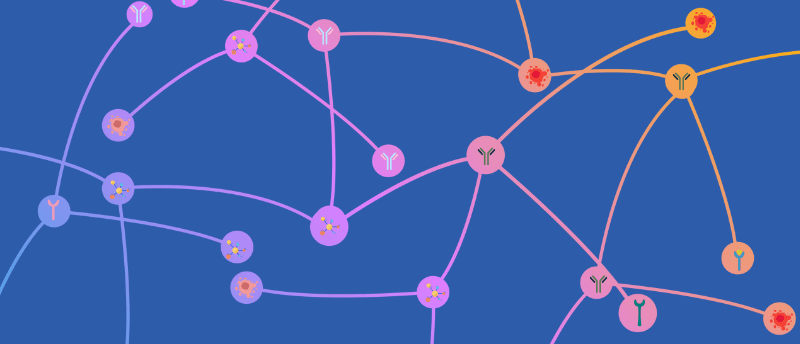Wins and warnings: AI in cancer drug discovery and development

 Bissan Al-Lazikani (left) is a Professor of Genomic Medicine and Director of Therapeutics Data Science at The University of Texas MD Anderson Cancer Center (Houston, TX, USA), where she heads an initiative to bring AI and data science to the entire cancer research pathway, from early drug discovery to Phase I clinical trials.
Bissan Al-Lazikani (left) is a Professor of Genomic Medicine and Director of Therapeutics Data Science at The University of Texas MD Anderson Cancer Center (Houston, TX, USA), where she heads an initiative to bring AI and data science to the entire cancer research pathway, from early drug discovery to Phase I clinical trials.
Here, she explains the value of foundation models – large neural networks trained on vast, generalized datasets that can be readily built upon to create AI models for different functions – in cancer drug discovery and provides her tips for using them while warning us of the challenges that a new suite of AI techniques present in this space.
What emerging trends do you currently see in the use of AI and computational techniques for cancer drug discovery?
It’s really exciting because there is such a wave of transformational technologies that have come out. One of the things really coming into its own at the moment is generative AI for small molecule and biotherapeutic generation. We can now use AI to design completely novel peptides and then make them in the lab. That’s a huge enabler for us as a community.
It’s also exciting that we’re starting to see AI move from being a new tool that people bring into their work, to a natural resource that people bring from the beginning of their research. The one thing I’m not seeing yet is the establishment of a connection between the entire pathway of drug discovery and development through a single unified AI forecasting model. This is the ambition that my lab is working towards.
Which of the computational techniques for cancer research are currently exciting you the most?
We’re all familiar with the foundation models in the form of large language models like ChatGPT but there are foundation models being built for functions like genomic and single-cell analysis, all things that we used to use traditional bioinformatics to do. The reason this is so incredibly powerful is that if you can train a foundation model in a certain area, for example, single-cell analysis, you can now apply it to new data, even if it’s a small dataset. This means we are no longer hostage to the size of data; as long as the initial model was trained on a big data set, you can analyze small data sets and capitalize on what these foundation models have learned. I only see this becoming a much bigger, growing area, especially as we go towards more intelligent and generalized foundation models.
Do you have any tips or advice for people trying to use those models?
I have two key tips and although they might sound a little contradictory, they’re not at all. The first tip is just jump in! There aren’t books or even online fora that are able to develop fast enough for you to go and read how to use these things. Look in the open publication sources by ChemRxiv or other archive repositories that publish new technology at a much faster rate than the standard peer review process, which is too slow to keep pace with development. So jump in and start using them; that is the quickest way to familiarize yourself.
However, the simplicity of familiarization brings in a real threat that leads me to the second piece of advice: do not forget your scientific thinking and your scientific method application when you’re utilizing one of these models. You need to think deeply when you’re training it about how are you going to validate its performance and output. What are your positive controls? How are you going to trick it to find out whether it has really learnt a genuine outcome or has it learnt just some confounder in your data? Be even more critical than normal, really think carefully about how you’re asking and how you’re judging the answers it’s giving you, because it’ll always give you an answer, even if it may not be correct.
Your session earlier this year at AACR 2025, provided a reality check on the practicality of AI. What were some of the key points from that session?
It was a fun session because we had people who’ve come from the basics of protein structure prediction, through to drug design using machine learning and AI. The session spanned the entirety of the drug development pathway, including how to analyze patient data to produce targets, predict protein 3D structures, start using machine learning to design and optimize drugs, and how to decide which drug to give to what patients.
We did not share slides with each other beforehand, but all three speakers came up with the same important question: what are the genuine challenges we’re facing when applying AI in drug discovery? Number one: we have a lot of data, which is often messy data, but that’s okay as long as you know how to handle it the messy data. The problem is the bias in data. For example, we have tons of data on small molecules against protein kinases or G protein-coupled receptors, but what about the rest of the chemical space against the rest of the biological space? Well, that’s empty. No matter how smart your models are, they’re not going to learn those areas. So, whenever you’re designing or training a model, you need to be aware of those biases and account for them.
There was also a really interesting discussion about out-of-distribution data, which is how to deal with new data that is different to what your model has seen before. That’s a problem we face across the board anywhere you apply AI in medicine. When you see the next patient or the next molecule, how can you judge whether your model is actually fit-for-purpose to use in this new situation?
So, the key messages were to be really critical of the process, to embrace the technology but, more than ever, be thoughtful, critical and try to use it as an aid to you as opposed to a replacement for your own thinking.
Which techniques have recently stood out to you in this space?
When you take collectively the spatial technologies that are now emerging, both on slides and in vivo, there seems to be a convergence of imaging capabilities and proteomic capabilities that are coupled with AI right from the start that enable us to observe dynamic molecular changes at a scale that we’ve never seen before. When you put them all together collectively, I think that’s going to be a transformative suite of techniques moving forward.